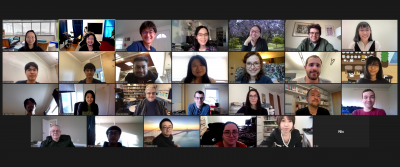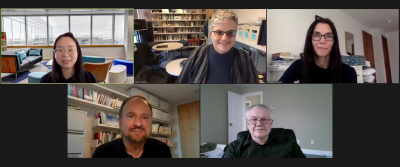Magdalena Kaufmann will give an invited online talk as part of the SPAGAD (SPeech Acts in Grammar And Discourse) lecture series at the Zentrum für Allgemeine Sprachwissenschaft, Berlin on July 1st. The talk will be titled: A compositional take on directive microvariation (abstract and link can be found here).
Other News
Jovović | Linguistic Inquiry
Ivana Jovović’s article “Condition B and Other Conditions on Pronominal Licensing in Serbo-Croatian” has just appeared online ahead of its print publication in Linguistic Inquiry. Congratulations Ivana!
Abstract: I argue that certain binding facts from Serbo-Croatian, analyzed as Condition B violations by Despić (2011, 2013), are best captured in terms of specific discourse constraints on coreferential pronouns and that such cases have no bearing on the categorial status of the nominal domain in Serbo-Croatian. I show that the availability of clitic and non-clitic pronouns that are coreferential with a possessor antecedent crucially depends on whether the antecedent is a discourse topic or new information focus; this leads me to conclude that such cases are not Condition B violations. I also observe that pronouns in English are subject to identical conditions and conclude that English also has clitic and nonclitic pronouns.
Shuyan Wang | invited talk at XISU
Shuyan Wang gave an invited talk at Xi’an International Studies University on June 10th. The title of her talk was: Scalar implicatures in child language: The role of processing capacities.
Kaufmanns at CNRS summer school
Magda and Stefan Kaufmann will be teaching at the summer school Conditionals 2022 (école thématique CNRS), held at the Institut National des Langues et Civilisations Orientales (INALCO), Paris, France, June 13-17, 2022:
- Magdalena Kaufmann. Conditionals without if – tracking conditional meaning across languages
- Stefan Kaufmann. Logical properties and linguistic expression of conditional meaning
Stefan Kaufmann | Talk at Stanford
Stefan Kaufmann gave a talk on his paper “How Fake is Fake Past?” in the “Construction of Meaning” series at Stanford University on May 19, 2022.
Stefan Kaufmann | UCHI Fellow
Congratulations to Stefan Kaufmann, who has been named a faculty fellow at the UConn Humanities Institute (UCHI) for 2022-2023 to work on the project “What was, what will be, and what would have been”.
Incoming graduate class of 2022
Our department is pleased to announce the incoming graduate class of 2022:
- Sharmin Ahmadi
- Thanos Illiadis
- Hanyu Liu
- Shangyan Pan
- Aarón Sánchez
- Yixuan Yan
Welcome!
Wang Defense
Shuyan Wang successfully defended her dissertation: Scalar implicatures in child language: The role of processing capacities on April 15th.
Congratulations, Shuyan!
Audience at the defense:

Dr. Wang with her committee:

Magdalena Kaufmann | CUNY Linguistics Colloquium
Magdalena Kaufmann gave a talk at CUNY as part of their Linguistics Colloquium series on April 7th, 2022. Her talk was titled “Practically out of control”.
Van der Hulst | AAUP Career Award
Harry van der Hulst has been awarded the 2022 Excellence in Research & Creativity Career Award from the UConn-AAUP, one of only two recipients in the university. The recipients were chosen by the UConn-AAUP Excellence Awards Committee from a pool of excellent candidates. The intention of the awards is to showcase academic excellence at UConn.
A virtual ZOOM ceremony to honor Professor van der Hulst, and other UConn-AAUP award recipients, will take place on Monday, April 25th at 12:00pm. Any and all who wish to attend are welcome and are asked to email Barbara Kratochvil to receive the ZOOM link.